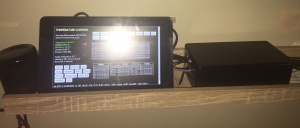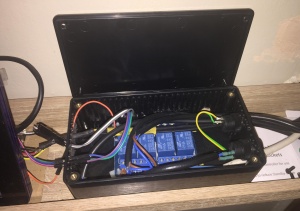Difference between revisions of "User:Rudy Bear"
| Line 28: | Line 28: | ||
==== Opening up the Sonoff ==== | ==== Opening up the Sonoff ==== | ||
| + | |||
| + | <gallery> | ||
| + | File:RB-sonoff.JPG | The Sonoff | ||
| + | File:RB-fingernail.JPG | Cracking it open | ||
| + | File:RB-Open.JPG | Opened up | ||
| + | </gallery> | ||
==== Soldering the header ==== | ==== Soldering the header ==== | ||
Revision as of 11:24, 4 November 2017
I'm attempting to use Sonoff hardware with the ESP-Easy firmware as a route to simple home automation, and data collection
Contents
Background - why am I doing this
I currently use a Raspberry Pi (RPi) to control my Central Heating. I have a series of (hardwired) temperature sensors in a few rooms in my house, the central heating boiler is controlled via a relay on the old thermostat wires, and I have a single solenoid controlled radiator value.
The RPi senses the temperature sensors every minute, and depending on the time of day and the temperature will activate the relay thus starting the boiler.
My living room heats up quite quickly due to a large radiator, and this switches off the Central Heating leaving other rooms colder than I'd like, so I've replaced the standard thermostatic radiator valve (TRV) in the living room with a valve that can be switched via a relay.
The system has been working well for the last year or so, and I've slowly added extra sensors and features, including an external temperature sensor and an atmospheric pressure sensor. My Central Heating control became sentient, and now tweets data - SwanPondWeather.
What irritates me is the large box that houses the relays and the fact that I have 240v (admittedly in a secure screwed down box) quite close to the RPi.
This page tries to describe my move to wifi controlled switches
Safety
The Sonoff boxes are quite small, and they have 240v running though them - If you don't know what you're doing, that will kill you. I will describe the modification that I've made to the Sonoff boxes, but this requires a small amount of soldering skill. If you're not confident that you can do this, then enjoy reading about the experience, but don't be tempted to get out that soldering iron.
- When flashing the Sonoff, always use the 3.3v pin, always disconnect the 240v supply
- Always ensure the Sonoof is reassembled in it's box before connecting the 240v supply




